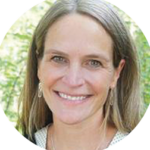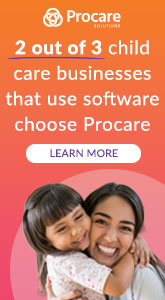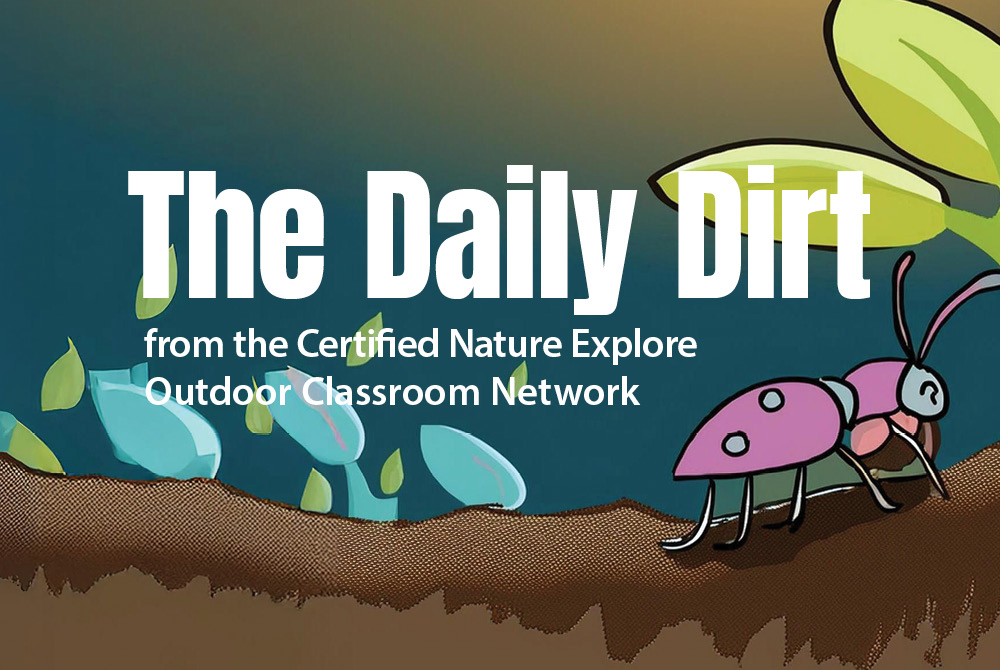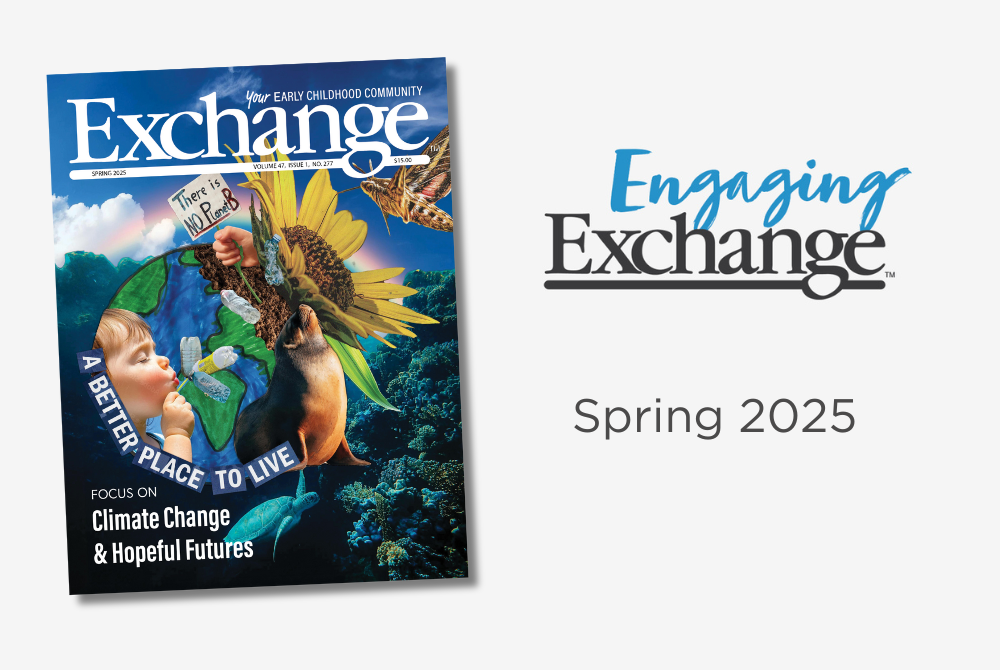Nature as an Antidote to the Digitalization of Children’s Lives
Nature-based early childhood education has grown in leaps and bounds over the past decade in North America. These programs take many forms—private nature preschools and forest kindergartens, one-day-a-week-outdoors in public school kindergartens and early elementary grades, public school Head Start programs, parent and child toddlers-in-the-woods outings, and family adventure clubs.
Prior to the pandemic, parental enthusiasm for nature-based programs had been growing. Parents sought out nature-based programs because of their concern over three trends in the 21st century. First, there is the “indoorification” of children’s lives. Children do not play outdoors as much and we know that children are twice as physically active when they are outdoors compared to when they are indoors (Participaction, 2015). Second, “digitalization” is overtaking children’s waking lives. Most early elementary-aged children spend 8 eight hours a day engaged with screens—iPads, phones, computer-assisted learning, Netflix, X-Box—and 30 minutes a day outdoors (Rideout et. al., 2010). Activity is limited to the hands and heads, while their bodies languish in inactivity. In schools, the “academification” of the early years curriculum has supplanted play-based approaches. Kindergarten is the new first grade. Preschool is the new kindergarten. Worksheets and direct instruction in reading and math have replaced the dress-up corner, the sand table, finger-painting and the block area in too many classrooms (Almon & Miller, 2009). Occupational therapists describe clumsy children, who are overweight, who fall out of chairs, and cannot run from one side of the playground to the other. Parents are concerned that their children have become sedentary, have forgotten how to play and that they are becoming “denatured.”
The pandemic exaggerated parent and teacher interest in this trend. Early on, it became clear that transmission of the virus in closed, indoor spaces was much more likely than outside in the open air. The lack of good ventilation systems indoors facilitated exposure to the virus; outdoor spaciousness facilitated dispersal of the virus, and allowed children to socially distance. In the summer of 2020, many early childhood programs and elementary schools across New England and the United States realized that one solution to keeping schools open during the 2020-21 school year was to move early childhood classrooms outside as much as possible. This preserved equal access for all children, rather than just the children with technology and a good internet connection. Educating outside was one part of the solution to the diversity, equity, and inclusivity challenges of the pandemic.
Making Nature-Based Education Available for All
It has been heartening to see the nature education movement evolve from serving mostly rural white middle class children to serving urban, lower income, children of color. In Duluth, Minnesota, the Head Start program occurs in the local public schools and a majority of the teachers have moved toward large chunks of time outdoors with their 4-year-olds. There is even an Ojibway immersion program offered for native children. In Baltimore, Backyard Basecamp focuses on “(Re)connecting Black, Indigenous, and People of Color to land and nature in Baltimore City.” At the Velma Thomas Early Childhood Center in Chicago, an inner city school with 70 percent Latinx students, teachers developed a relationship with a nearby city park and centered their curriculum development initiatives around childhood and nature play themes for three years (Vasquez & Haigh, 2021).
Until March 2023, Tiny Trees Nature Preschool in Seattle offered affordable outdoor education in city parklands. The program directors acknowledge, “In order to provide full and meaningful education to our students, and to advance our organizational values, it is critical that we are examining and interrupting our own biases and internalized racial oppression. We are re-imagining our enrollment and retention processes to be more accessible and culturally responsive. This includes examining and adjusting how we conduct outreach, registration and communication with families” (Tiny Trees, 2023). Tiny Trees aspired to making nature-based education available to inner city children of color with limited means.
Assessing Children’s Academic Readiness
Despite the attractiveness of these programs, one of the major barriers for parents is their concern over whether nature-based early childhood programs will negatively impact their children’s future school success. Parents like the appeal of children skipping gaily through the forest, jumping in leaf piles, sloshing in puddles, and cuddling bunnies. They appreciate the greater emphasis on physical development and social emotional growth that appears to be occurring in nature-based early childhood programs. But they still ask, “Will my child be ready for kindergarten or first grade?” Readiness for school means a lot of things to a lot of people, but there are at least two definitive camps, or schools of thought. Academic readiness, as in children know their letters and numbers, versus social-emotional readiness, as in children have executive function capacities such as cognitive flexibility, working memory and inhibitory control, and social interaction skills (D’Amore et. al., 2015).
To tackle this question, we launched a series of research projects about 10 years ago to quantitatively measure some of the school readiness aspects of early childhood programs. For the first five years, I collaborated with Lori Skibbe at Michigan State University and Rachel Larimore, founding director of the Chippewa Nature Preschool in Midland, Michigan. Chippewa is recognized as one of the preeminent nature center-based preschools in the country. The successful preschool program at Chippewa led to the adoption of nature kindergartens, nature first grades and nature second grades in the local Bullock Creek public school district.
Initially, we conducted qualitative research focused on the Chippewa Nature Preschool and the nature kindergartens at the Bullock Creek Elementary School. This research found that teachers, administrators, and parents were pleased about the impact of nature-based approaches on motivation and enthusiasm for school, language development, STEM learning, physical development, and executive function. Hoping to quantify some of these qualitative findings, we conducted an additional two years of research. One study focused on comparing the academic growth of Chippewa Nature Preschool students with students in a high-quality university laboratory preschool. The primary difference was the amount of time spent outside and the focus on nature-based approaches. A second study compared nature kindergarten and nature first grade students to traditional kindergarten and first grade students in a Michigan public school district. We used a variety of Aimsweb instruments to assess academic growth. On all of the subtests of the battery of assessments implemented, there was no difference in growth between the nature-based class students and the traditional students in all measures of language development. On a few of the subtests of math, the traditional students showed slightly more growth (Larimore & Sobel, 2018) and (Larimore, Pikus, Skibbe, & Sobel, 2019).
Faculty at Case Western Reserve conducted similar research on 26 half-day preschool children at an independent school in Cleveland. Parents and teachers were asked to complete forms at the beginning and end of the year using six different assessment measures, including the Penn Interactive Peer Play Scale, the Preschool and Kindergarten Behavior Scales, the Pretend Play Scale, Kindergarten Readiness Measures, Children’s Attitudes Toward School, and Children’s Attitudes Toward Nature. The Kindergarten Readiness Measure used is most analogous to the Aimsweb Plus assessments used in the Michigan study described above.
ADVERTISEMENT
The researchers found that “children in both types of preschool programs achieved expected developmental gains in their behavior, early academic skills, and social-emotional functioning over the year prior to kindergarten. In most areas and generally overall, the two groups ended the year with equal levels of preparedness for kindergarten in the domains of social-emotional functioning, academic readiness, and pretend play. This information should help parents and educators choose high-quality, nature-based preschool programs with confidence, knowing that the learning that takes place outdoors provides similar academic and social-emotional benefits as the learning that takes place in a traditional setting” (Cordiano, 2019).
Essentially, the broad finding in all these studies was that even though the nature-based students were spending more time outdoors, their academic growth was similar to the growth of the traditional students. In regard to the academic version of the readiness question, the children were prepared for public school kindergarten and first grade.
Assessing Children’s Social-Emotional Readiness: Resilience and Executive Function
For the next chapter of research, we were attracted to two different public school districts in Minnesota. One suburban district in southern Minnesota had a public preschool program that included nature-based instruction classrooms, traditional classrooms, and blended classrooms that were midway between nature-based and traditional. A different, more urban school district in northern Minnesota hosted the local Head Start program in their nine elementary schools. In these classrooms, there was a similar differentiation between nature, traditional, and blended approaches to early childhood education. The district-wide existence of these three approaches minimized the socio-economic and parental differences between the three groups of students, making for better control of confounding variables. Here we decided to focus more on the social-emotional development of children—that second version of what constitutes “readiness.”
At the height of the pandemic, Julie Ernst and Hannah Juckett implemented a study of the development of resilience factors in children during the pandemic school year of 2020-21 using the Deveraux Early Childhood Assessment for Preschoolers (LeBuffe & Naglieri, 2012). Resilience is defined as the capacity of individuals to cope successfully with significant change, adversity, or risk. This is measured by asking parents and teachers about a child’s initiative (the child’s ability to use independent thought and action to meet his or her needs), self-regulation (the child’s ability to express emotions and manage behavior in healthy ways), and attachment (the child’s ability to promote and maintain mutual positive connections with other children and adults) (LeBuffe & Naglieri, 2021).
It should be clear that even though executive function and resilience are distinct features of the child’s cognitive and social make-up, there is at least overlap in the area of self-regulation and perhaps in the area of initiative. Therefore, you will see that the results from these two studies resonate in interesting ways.
In the resilience study, comparing students in nature-based versus blended versus traditional preschool classrooms, the conclusions were that nature-based and blended classrooms (half nature/half traditional) had greater impact on the development of resilience factors than traditional classrooms. “Thus, when goals for young children include fostering the protective factors children can draw upon in times of adversity, the incorporation of nature-based practices and experiences into preschool programming appears to be an effective approach” (Ernst, Juckett, & Sobel, 2021). This was a particularly striking finding during a pandemic year of schooling, in which children faced multiple adversities. An intriguing pattern to note here is that there was not a significant difference between the blended classrooms and the nature-based classrooms in regard to increasing resilience factors. In other words, some nature is better than no nature, but a lot of nature is not necessarily better than some nature.
During the 2021-22 school year we conducted research with the Head Start students in a northern Minnesota public school district with the same range of nature, blended and traditional classes. We focused on the impact of these three different preschool experiences on the growth of children’s executive functions. The classrooms were grouped based on teacher’s responses on the Teacher Natureness Rubric. Here the dependent variable was the child’s performance on the Minnesota Executive Function Scale, an easily administered assessment conducted on an iPad (Carlson, 2018).
The findings were that incorporating nature-based practices into preschool was effective at supporting executive function growth in students. “Children in preschool programs that incorporated some nature-based practices (blended) had significantly higher EF levels at the end of the school year than children in programs where nature-based practices were more minimally used (Less Nature).” Preschool programs that were primarily nature-based (nature) did not increase executive function any more than the preschool programs that used some nature-based practices (blended).
The really unexpected finding was that the results of this executive function study exactly mirrored the findings of the resilience study. Blended preschool programs were more impactful than non-nature programs and more nature programs did not lead to even stronger outcomes than blended programs. To summarize again, some incorporation of nature-based practices appears to be better than none in terms of supporting executive function and resilience growth in preschoolers, but even greater incorporation of nature-based practices in preschool did not appear to be more impactful than the blended approach.
Blending Nature Into Your Early Childhood Classroom
The practical application of these findings is that the benefits of nature-based instruction and experience for preschoolers is within the reach of a majority of early childhood providers. Teachers and school districts do not need to create comprehensive, outside-most-of-the-day, nature-based programs in order to gain the benefits associated with nature-based instruction. The one-day-a-week in the woods approach popular in New England or the one-third to one-half of a day outside every day might be just the right amount.
Therefore, “leveraging the potential benefits of nature through a blended approach becomes within the reach of public early learning programs, for whom fully embracing the nature preschool movement or full incorporation of nature-based practices and settings, is not desired and/or has not been feasible. While more research is needed, the study at hand is encouraging, as it suggests that for relatively little financial investment, meaningful and timely impacts might be gained. Additionally, it is particularly encouraging to have benefits occur within a district that is publicly funded, with participants of lower SES, and programs situated in urban settings. Thus, not only does the blended approach to incorporating nature-based practices appear to be effective, but also quite accessible” (Ernst, Sobel, & Neil, 2022).
These findings are significant in addressing the problem of nature-based early childhood programs being mostly available for white, middle class children. Without a concerted effort to make nature preschool programs more accessible to a broader demographic, “nature preschool programs run the risk of unintentionally widening outcome gaps relating to young children’s learning and development, while possibly even possessing the potential to reduce them. In the context specifically of executive function, this concern is underscored, given research suggesting the protective role EF skills may play in the outcomes of children who might otherwise be expected to ‘fail’ academically due to stressful environmental factors” (Ernst, Sobel, & Neil 2022).
What does some nature look like? There are many ways to introduce more nature into your everyday practice.
In Vermont, many public school kindergartens have implemented a one-day-a-week in the woods practice. They create an outdoor classroom on the playground or in woods near the school and conduct their whole program outdoors (PEER Associates, 2017).
In urban settings this can take the form of one-day-a-week outings to a city park not far from the school, to conduct literacy and math instruction while also allowing for some child-directed explorations.
To facilitate being outdoors in many weathers, (as opposed to all weathers), work with parents to provision their children with rainsuits, warm layers, and boots. Some teachers seek funding to buy a classroom set of outdoor gear. Other teachers browse used clothing stores to buy second-hand rainsuits and boots. It is also valuable to work with administrators and parents to create structures that facilitate being comfortable outdoors. Covered pavilions that protect children from rain and intense sun are valuable. These pavilions can be furnished with permanent seating and white boards for conventional lessons.
Taking your class outside two or three times a week for structured outdoor games on the playground is a valuable practice. Teach and lead traditional movement games that develop executive function. Games like Simon Says or Red Light/Green Light develop inhibitory control and get children moving their whole bodies (D’Amore, 2015).
Daily nature walks through the school’s urban neighborhoods help develop children’s physical fitness and teach children to observe their natural and built environments. Find a copy of Helen Ross Russell’s classic “Ten Minute Field Trips” for ideas on how to structure nearby urban field trips (Russell, 1973).
Invite parents to come along on school-based parent-child field trips to a nearby stream or lakeshore, so parents can observe teachers conducting appropriate nature connection activities with their children. One of the goals of naturalizing the classroom experience is to encourage parents to naturalize their children’s out-of-school experiences as well.
Implementing any or all of these changes will bring more energy and life to your early childhood classroom. The physical activity and fresh air will wake children up, and outdoor activities will serve to restore children’s attention and make them more engaged indoors. Children will become happier, healthier and just as smart compared to when you keep them indoors most of the day.
References
Almon, J. and Miller, E. (2009). Summary and Recommendations of Crisis in the Kindergarten: Why Children Need to Play in School. Alliance for Childhood.
Cordiano, T., Lee, A., Wilt, J., Elszasz, A., Damour, L., and Russ, S. (2019). Nature-Based Education and Kindergarten Readiness: Nature-Based and Traditional Preschoolers Are Equally Prepared for Kindergarten. International Journal of Early Childhood Environmental Education, 6(3), 18–36.
Carlson, S. (2018). Minnesota Executive Function Scale: Technical Report. Saint Paul, MN: Reflection Sciences.
D’Amore, C., Charles, C., and Louv, R. (2015). Thriving Through Nature: Fostering Children’s Executive Function Skills, Children & Nature Network.
childrenandnature.org
Ernst, J., Juckett, H., and Sobel, D. (2021). Comparing the Impact of Nature, Blended and Traditional Preschools on Children’s Resilience: Some Nature May Be Better Than None. Frontiers in Psychology, 12. doi:10.3389/fpsyg.2021.724340
Ernst, J., Sobel, D., and Neil, A. (2022). Executive Function in Early Childhood: Harnessing the Potential of Nature-Based Practices to Elevate and Equalize Outcomes. Frontiers in Education, 7. doi.org/10.3389/feduc.2022.1011912
Larimore, R. and Sobel, D. (2020). Nature Cements the New Learning: Expanding Nature-Based Learning into the K-5 Curriculum. In Cutter-Mackenzie-Knowles, A., Malone, K., and Barratt Hacking, E. (Ed.), Research Handbook on Childhoodnature.
Larimore, R., Pikus, A., Skibbe, L., and Sobel, D. (2019). Comparing Literacy and Math Skills Development in Nature K/1st and Traditional K/1st Classrooms in a Michigan Public School District: A Quantitative Analysis of Aimsweb Plus Assessment Scores In Nature and Traditional K/1st Classrooms. Antioch University New England, Keene, NH, and Michigan State University, Lansing, MI.
LeBuffe, P. and Naglieri, J. (2012). Devereux Early Childhood Assessment for Preschoolers, Second Edition: User’s Guide and Technical Manual. Villanova, PA: Devereux Center for Resilient Children.
Participaction. (2015). The Biggest Risk is Keeping Kids Indoors: The 2015 ParticipACTION Report Card on Physical Activity for Children and Youth. Toronto: ParticipACTION. participaction.com
PEER Associates and Powers, A.L. (2017). Forest Days Case Studies: Hartland Elementary, VT; Ludlow Elementary, VT; Mount Lebanon Elementary, NH.
peerassociates.net
Rideout, V.J., Foehr, U.G., and Roberts, D.F. (2010). Generation M2: Media in the lives of 8- to 18-year olds. Menlo Park, CA: Kaiser Family Foundation.
Russell, H.R. (1973). Ten-Minute Field Trips, Using the School Grounds for Environmental Studies; A Teacher’s Guide.
Tiny Trees Preschool, Seattle, Washington. Quote extracted from webpages on 14 March 2023: tinytrees.org/for-families/
Vasquez, K.B. and Haigh, K. (2021). A Partnership with Nature: An Urban Schools Collaborative Study. Innovations in Early Education, 28(1).
Related
ADVERTISEMENT













